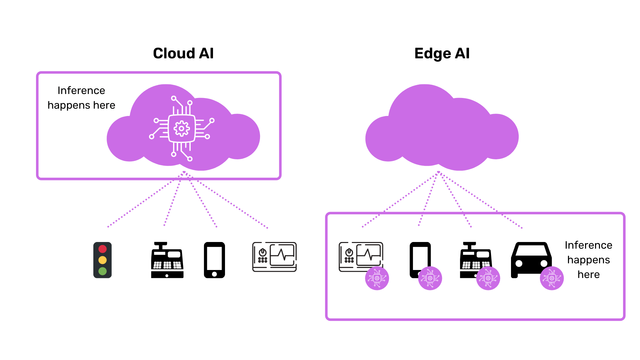
Applied machine learning is a way to apply ML to solve real-world problems. In real life, machine learning is used to identify patterns in data. For example, Netflix recognizes sci-fi movie patterns. It could also be used to detect cancer in mammograms. This is called "nearfield" or machine learning. Here are some examples that ML could solve. What are the greatest applications of machinelearning?
Applications of machine learning
Machine Learning has gained popularity because of the increasing number of large datasets. Machine learning algorithms have many applications including classification and regression, clustering and dimensionality reducing. Machine Learning has shown to be superior in many different fields, such as image classification, speech recognition, web search, and speech recognition. Machine Learning is used to power online services such as Netflix which has more than 100 million subscribers. Here are five of Machine Learning’s most used Applications.
Machine learning is most commonly used in enterprises. This technology is frequently used in manufacturing systems, enterprise finance, and other areas. Machine learning can accelerate software testing. This could lead to better-designed software that runs faster. Another application is in decision support, where machine learning can analyze several scenarios and make recommendations based on the results. It can also be used for detecting workplace safety violations. While some uses cases are more specialized than others, many companies use machine learning technology today.

Machine learning tools available
Machine learning can be applied using a variety of tools. Mallet (a Java-based package; full name Machine Learning for Language Toolkit), is an example of a tool that allows for entity extraction and document classification in text documents. Shogun is a C++ open-source library that provides an interface to many languages. It's another useful tool for text analytics. Lastly, Keras, an advanced neural network API, provides a complete managed environment for developing and deploying ML models.
Another useful machine-learning tool is the NumPy library. It replaces Numeric. It offers multidimensional arrays, vectors, and linear algebra capabilities. Furthermore, it supports numeric expressions as well matrix operations and broadcasting functions. NumPy can also provide higher-order mathematical functions such as those used in scientific computations. This software allows the creation of machine-learning models with multiple inputs.
Methods for applying machine learning to a problem
There are many uses for machine learning. An example of machine learning is in a mobile app used by a pet shop to sell different kinds of food. But it can also alter the type and price of the dog it sells. Data that is current enough to be useful is needed in these cases. Furthermore, many businesses have different features, such as prices and service areas, which make the data more relevant. To make machines understand the data, it is important to label them.
Machine learning has been used in many areas of materials science. Table 1 displays the properties predicted by machine learning algorithms for a variety of materials. This case provides a great example of the challenges and strategies in computational materials science. Machine learning has been used in a number of studies to map composition spaces within a matter of hours. To learn more about the application of machine learning in materials science, read on!

Purdue University's Applied Machine Learning Bootcamp
Simplilearn's Applied Machine Learning online course is a four-month virtual Bootcamp curated in collaboration with Purdue University. Reputable educators offer top-notch mentorship and education to students. Course content covers the basics of ML/data science. Students can also participate in hands-on activities and take virtual classes. Instructors will provide hands-on training and an international perspective on machine intelligence.
Faculty, graduate students and industry professionals participated in the boot camp. Cross-disciplinary collaborations were possible because of the emphasis on causal machine learning and Big Observational data. Purdue/IBM brings together industry-aligned content with academic excellence. Class sizes are small to ensure maximum interaction and hands-on experience. External speakers will share their findings and discuss the latest technologies and challenges in this field.
FAQ
What are the advantages of AI?
Artificial intelligence is a technology that has the potential to revolutionize how we live our daily lives. It's already revolutionizing industries from finance to healthcare. It's also predicted to have profound impact on education and government services by 2020.
AI is already being used in solving problems in areas like medicine, transportation and energy as well as security and manufacturing. The possibilities are endless as more applications are developed.
So what exactly makes it so special? First, it learns. Computers can learn, and they don't need any training. Instead of learning, computers simply look at the world and then use those skills to solve problems.
It's this ability to learn quickly that sets AI apart from traditional software. Computers can read millions of pages of text every second. Computers can instantly translate languages and recognize faces.
It can also complete tasks faster than humans because it doesn't require human intervention. In fact, it can even outperform us in certain situations.
A chatbot named Eugene Goostman was created by researchers in 2017. Numerous people were fooled by the bot into believing that it was Vladimir Putin.
This is proof that AI can be very persuasive. Another advantage of AI is its adaptability. It can be easily trained to perform new tasks efficiently and effectively.
This means that companies do not have to spend a lot of money on IT infrastructure or employ large numbers of people.
Which countries lead the AI market and why?
China has the largest global Artificial Intelligence Market with more that $2 billion in revenue. China's AI industry is led by Baidu, Alibaba Group Holding Ltd., Tencent Holdings Ltd., Huawei Technologies Co. Ltd., and Xiaomi Technology Inc.
China's government is heavily investing in the development of AI. The Chinese government has set up several research centers dedicated to improving AI capabilities. The National Laboratory of Pattern Recognition is one of these centers. Another center is the State Key Lab of Virtual Reality Technology and Systems and the State Key Laboratory of Software Development Environment.
China is home to many of the biggest companies around the globe, such as Baidu, Tencent, Tencent, Baidu, and Xiaomi. All these companies are actively working on developing their own AI solutions.
India is another country making progress in the field of AI and related technologies. India's government is currently working to develop an AI ecosystem.
AI: Is it good or evil?
AI is both positive and negative. Positively, AI makes things easier than ever. We no longer need to spend hours writing programs that perform tasks such as word processing and spreadsheets. Instead, we can ask our computers to perform these functions.
The negative aspect of AI is that it could replace human beings. Many believe robots will one day surpass their creators in intelligence. They may even take over jobs.
Who is leading today's AI market
Artificial Intelligence (AI) is an area of computer science that focuses on creating intelligent machines capable of performing tasks normally requiring human intelligence, such as speech recognition, translation, visual perception, natural language processing, reasoning, planning, learning, and decision-making.
There are many types today of artificial Intelligence technologies. They include neural networks, expert, machine learning, evolutionary computing. Fuzzy logic, fuzzy logic. Rule-based and case-based reasoning. Knowledge representation. Ontology engineering.
It has been argued that AI cannot ever fully understand the thoughts of humans. But, deep learning and other recent developments have made it possible to create programs capable of performing certain tasks.
Google's DeepMind unit today is the world's leading developer of AI software. Demis Hassabis was the former head of neuroscience at University College London. It was established in 2010. DeepMind was the first to create AlphaGo, which is a Go program that allows you to play against top professional players.
Who invented AI?
Alan Turing
Turing was conceived in 1912. His father was a clergyman, and his mother was a nurse. He was an exceptional student of mathematics, but he felt depressed after being denied by Cambridge University. He started playing chess and won numerous tournaments. After World War II, he worked in Britain's top-secret code-breaking center Bletchley Park where he cracked German codes.
He died in 1954.
John McCarthy
McCarthy was born in 1928. He studied maths at Princeton University before joining MIT. There he developed the LISP programming language. He had laid the foundations to modern AI by 1957.
He died in 2011.
Statistics
- In the first half of 2017, the company discovered and banned 300,000 terrorist-linked accounts, 95 percent of which were found by non-human, artificially intelligent machines. (builtin.com)
- According to the company's website, more than 800 financial firms use AlphaSense, including some Fortune 500 corporations. (builtin.com)
- More than 70 percent of users claim they book trips on their phones, review travel tips, and research local landmarks and restaurants. (builtin.com)
- By using BrainBox AI, commercial buildings can reduce total energy costs by 25% and improves occupant comfort by 60%. (analyticsinsight.net)
- That's as many of us that have been in that AI space would say, it's about 70 or 80 percent of the work. (finra.org)
External Links
How To
How to set Alexa up to speak when charging
Alexa, Amazon's virtual assistant can answer questions and provide information. It can also play music, control smart home devices, and even control them. It can even listen to you while you're sleeping -- all without your having to pick-up your phone.
Alexa is your answer to all of your questions. All you have to do is say "Alexa" followed closely by a question. She will give you clear, easy-to-understand responses in real time. Alexa will improve and learn over time. You can ask Alexa questions and receive new answers everytime.
Other connected devices, such as lights and thermostats, locks, cameras and locks, can also be controlled.
Alexa can be asked to dim the lights, change the temperature, turn on the music, and even play your favorite song.
Alexa to speak while charging
-
Step 1. Step 1. Turn on Alexa device.
-
Open Alexa App. Tap Settings.
-
Tap Advanced settings.
-
Select Speech recognition.
-
Select Yes, always listen.
-
Select Yes, only the wake word
-
Select Yes, and use a microphone.
-
Select No, do not use a mic.
-
Step 2. Set Up Your Voice Profile.
-
Choose a name for your voice profile and add a description.
-
Step 3. Step 3.
After saying "Alexa", follow it up with a command.
For example: "Alexa, good morning."
Alexa will respond if she understands your question. For example, "Good morning John Smith."
Alexa will not reply if she doesn’t understand your request.
After these modifications are made, you can restart the device if required.
Notice: If the speech recognition language is changed, the device may need to be restarted again.